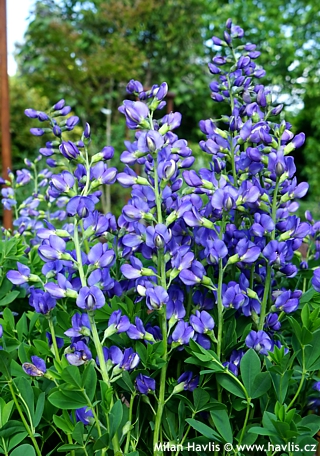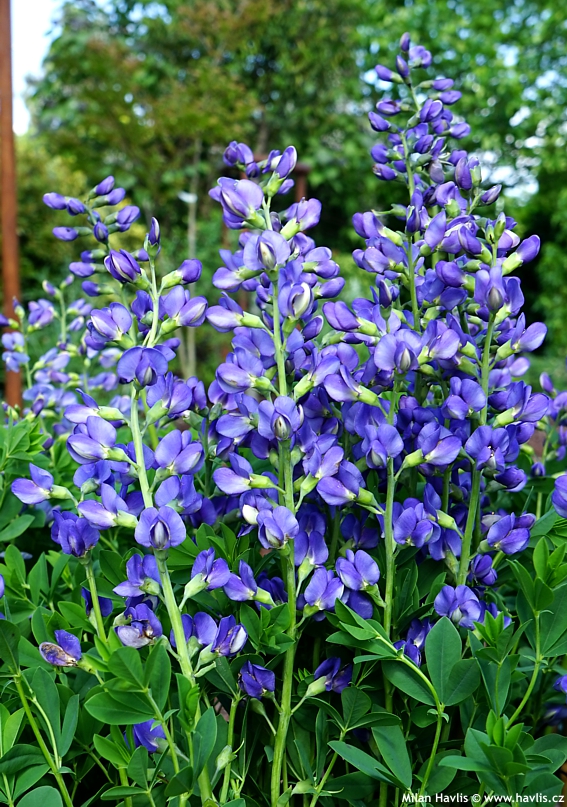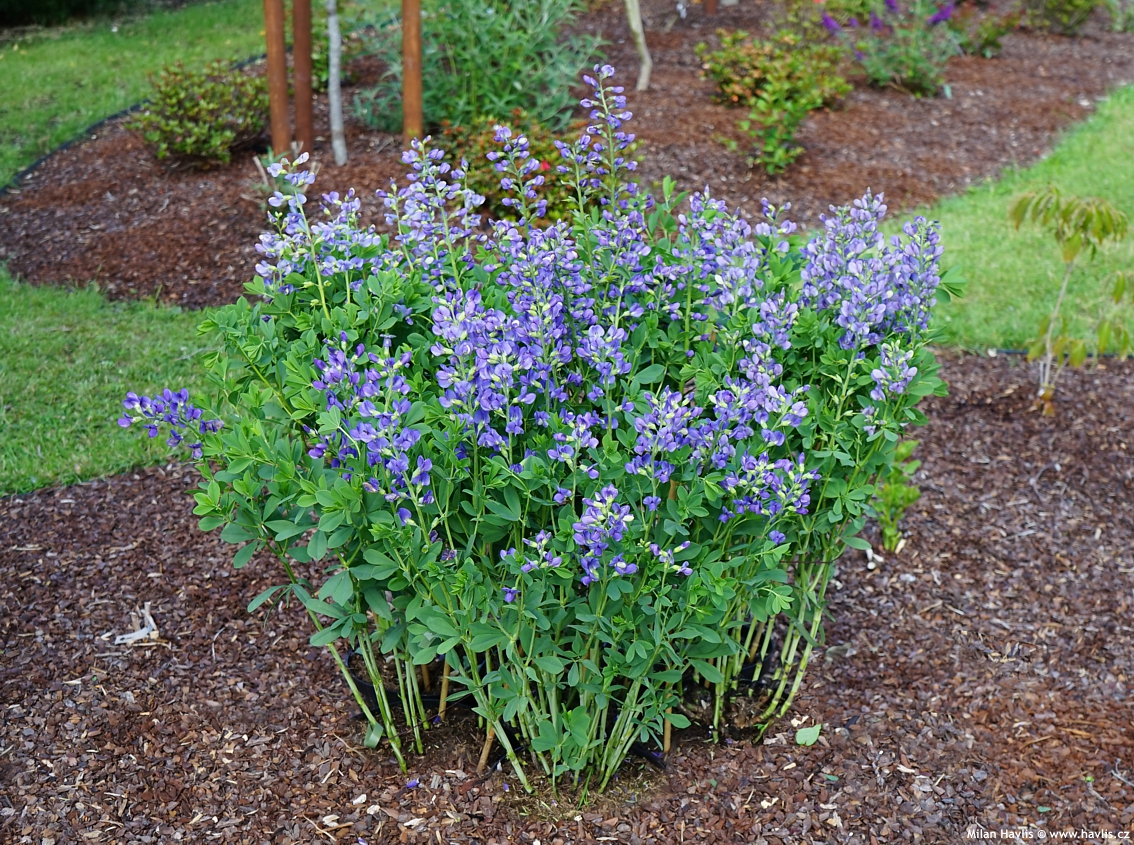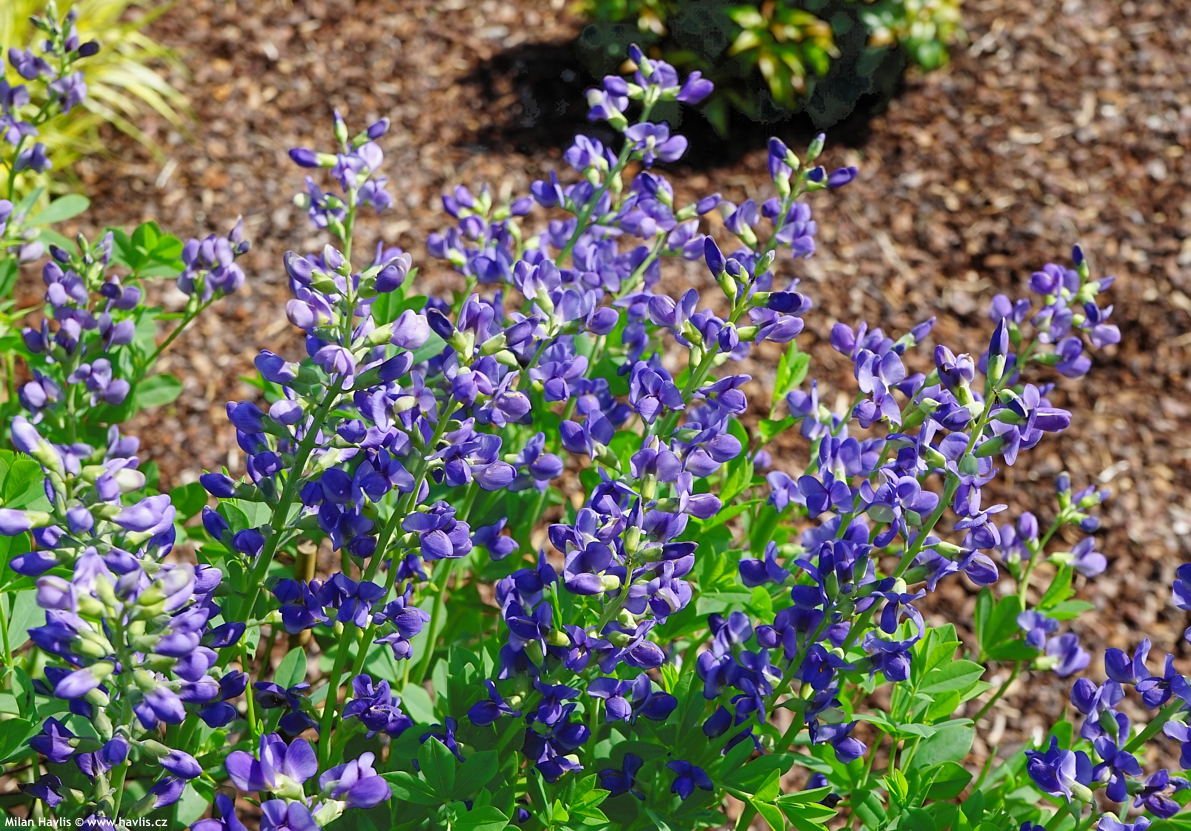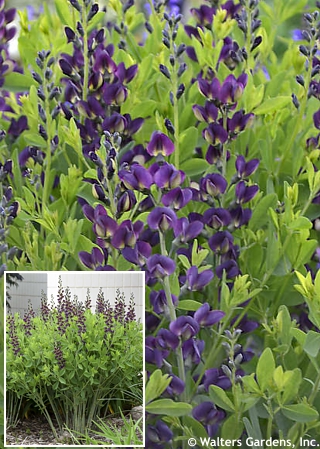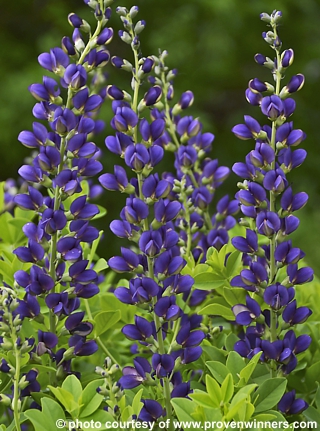Baptisia australis false indigo
size/type
mid-sized perennial,mid-sized perennial
usual height
0,8-1m
usual width
1-1,3m
leaves
deciduous broadleaf
colour of leaves
flowers
showy
colour of flowers
blooming time
June-July
location
full to partial sun
soil type
any (acidic to alkaline)
USDA zone (lowest)
4 (down to -34°C)
winter protection
for zone 5+6

for zone 7

categorized
Baptisia
Baptisia – false indigo is a tough and long-lived perennial native to S.E. USA and E. North America. The genus comprises of about 20 species which grow mostly in dry and sunny locations. In Europe it was almost absent until the end of the second millennium. But at the turn of the century it slowly became available in garden centres where mostly hybrids combining the best of each species are offered. These tall perennials exhibit a longevity of 15-20 years and make a stunning display of erect, lupine-like inflorescence.Description of the plant:
Baptisia australis is one of the most important false indigo species used for further hybridizing. It produces rich blue or violet blue pea-like flowers which form 45-50 cm long, erect racemes, and bloom for 2-3 weeks atop 80-100 cm tall stems usually in late June in C.E. climate. It forms a dense clump which may tend to flop when flowering is at its peak so a support (similar to that you use for flowering peonies) is advised. Palmate leaves are divided into 3 ovate, mid green leaflets. False indigo has just one disadvantage – it is extremely slow to establish hence its high retail price. But once it does it multiplies the number of stems year after year and makes almost a shrub-like appearance owing to which it is often used as a companion plant among non-flowering shrubs and small trees. It was voted Perennial of the Year 2019 by the Czech Perennial Association.
Baptisia needs full sun and warm soil. It is not picky about soil pH but requires well-drained ground. Sand and gravel do miracles as they warm up the soil by getting rid of all excess water. Feeding is not required. In late autumn or early spring remove all stems just above ground level. Hardy to min. -34 °C (USDA zone 4), perhaps a few degrees lower.
Last update 08-07-2021
QUICK PRICE OVERVIEW
CURRENTLY SOLD OUT












